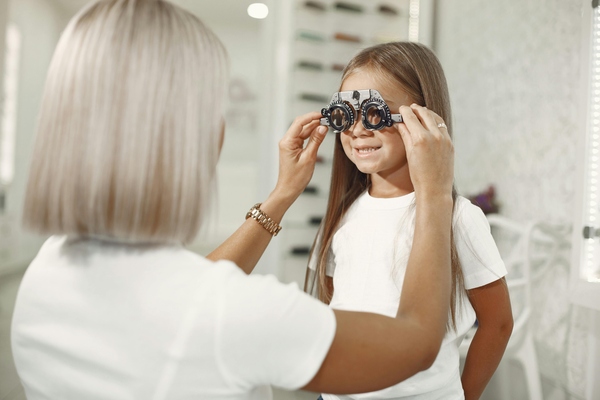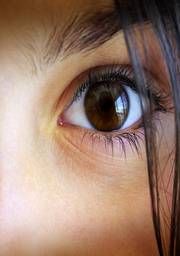4 Ways to Safeguard Your Child’s Visual Development
For most of us, what we see throughout our lives is like breathing. We don’t think much about it so naturally, it’s easy to take out sight for granted. Eyes are our window to the world. And from the time a child is born, eyes develop continuously through infancy and into childhood, shaping how children perceive the world around them.
However, parents need to be aware that myopia rates are on the rise, with four out of ten people worldwide already nearsighted. Inna Lazar, OD, a Connecticut-based optometrist, cites a mix of factors contributing to the prevalence of nearsightedness. Environmental factors, in particular, including extensive close-up activities, have been found to play a measurable role in the development of myopia.
Moreover, Dr. Lazar explains that the younger a child is when they become myopic, the more likely their condition is to progress. This makes it even more crucial for parents to adopt a proactive approach to safeguarding their children’s vision as they grow. Below, we take a look at four ways that parents can help protect and nurture their children’s vision.
Schedule regular eye exams
Many children’s eye issues often go undiagnosed, either due to lackluster school screenings or because children may not have the vocabulary to express their vision difficulties effectively. A study presented at the 2024 Global Specialty Lens Symposium confirmed that just 14% of children aged 7 or younger underwent eye examinations. However, 43.5% of all children displayed over 0.50 diopters of myopia in at least one eye.
By scheduling regular eye exams with a qualified optometrist, parents can ensure that any vision issues are detected and addressed promptly. A comprehensive eye exam delves deeper than school screenings, checking for common eye conditions like glaucoma and providing a thorough assessment of a child’s visual acuity.
Appropriate measures such as prescription eyewear or vision therapy may then be recommended. Hence, these exams should be scheduled at least once a year or more, depending if your child is showing signs of vision problems. You can schedule these for the whole family to encourage your child’s participation and ease any worries, as well.

Encourage consistent wearing of vision corrective tools
Concerns about appearance or discomfort typically impede acceptance of eyewear. Hence, when eye exams indicate a need for vision correction, getting children to willingly wear prescription eyeglasses can pose a common challenge for parents. Nevertheless, wearing glasses consistently helps to alleviate vision problems and prevents further eye strain.
If you’re seeking strategies to encourage kids to wear glasses, consider letting your child actively select their frames, introducing glasses gradually, and maintaining consistent wear. Red-colored plastic frames are common favorites among children, alongside rectangular glasses and spectacles with straight earpieces.
For outdoor activities, investing in sunglasses with UV protection is equally important. Prolonged exposure to harmful UV rays can lead to various eye problems, including cataracts, macular degeneration, and photokeratitis. Similarly, let your child find a stylish pair that they genuinely adore, and then you can also set an example by normalizing sunglasses as part of everyday life, ensuring that your child’s eyes are shielded from as much potential damage as possible.
Limit screen time
In today’s digital age, children are spending more time than ever in front of screens, from computers and tablets to smartphones and televisions. This prolonged screen time can contribute to digital eye strain, myopia, and other vision-related issues. Because blue light exposure at night affects the body’s natural circadian rhythms, excessive screen time can also affect the quality of sleep, thereby hindering the eye’s ability to rest properly.
To safeguard your child’s visual development, it’s essential to set boundaries with technology and limit their screen time. Develop a bedtime routine that doesn’t involve screen time, such as storytelling, practicing mindfulness, or journaling. Additionally, encourage outdoor activities instead. Spending time outdoors exposes children to natural light, which is essential for healthy eye development. Whether it’s playing sports, going for nature walks, or simply enjoying time in the backyard, outdoor activities provide numerous benefits for your child’s visual development and overall well-being.
Provide healthy nutrition
Nutrients such as vitamins A, C, and E, as well as omega-3 fatty acids and zinc, play key roles in maintaining healthy eyes and preventing eye-related issues. Hence, encouraging your child to eat a variety of nutrient-rich foods — including fruits, vegetables, whole grains, lean proteins, and healthy fats — can be vital for supporting optimal visual development.
Foods such as carrots, leafy greens, citrus fruits, nuts, and fish are particularly beneficial for eye health.
Consider incorporating a cup of carrot juice into your child’s breakfast every morning, as only 236 grams of carrots can carry over 250% of the DV for vitamin A. You can also pack a bag of nuts or a few slices of orange to your child’s lunch bag for school. By providing easy and accessible eye-healthy snacks, you can help provide the necessary nutrients for their growing eyes.
With these tips, parents can help support optimal visual development in their children. This helps ensure that children have the best possible start in life and healthy vision for years to come.





